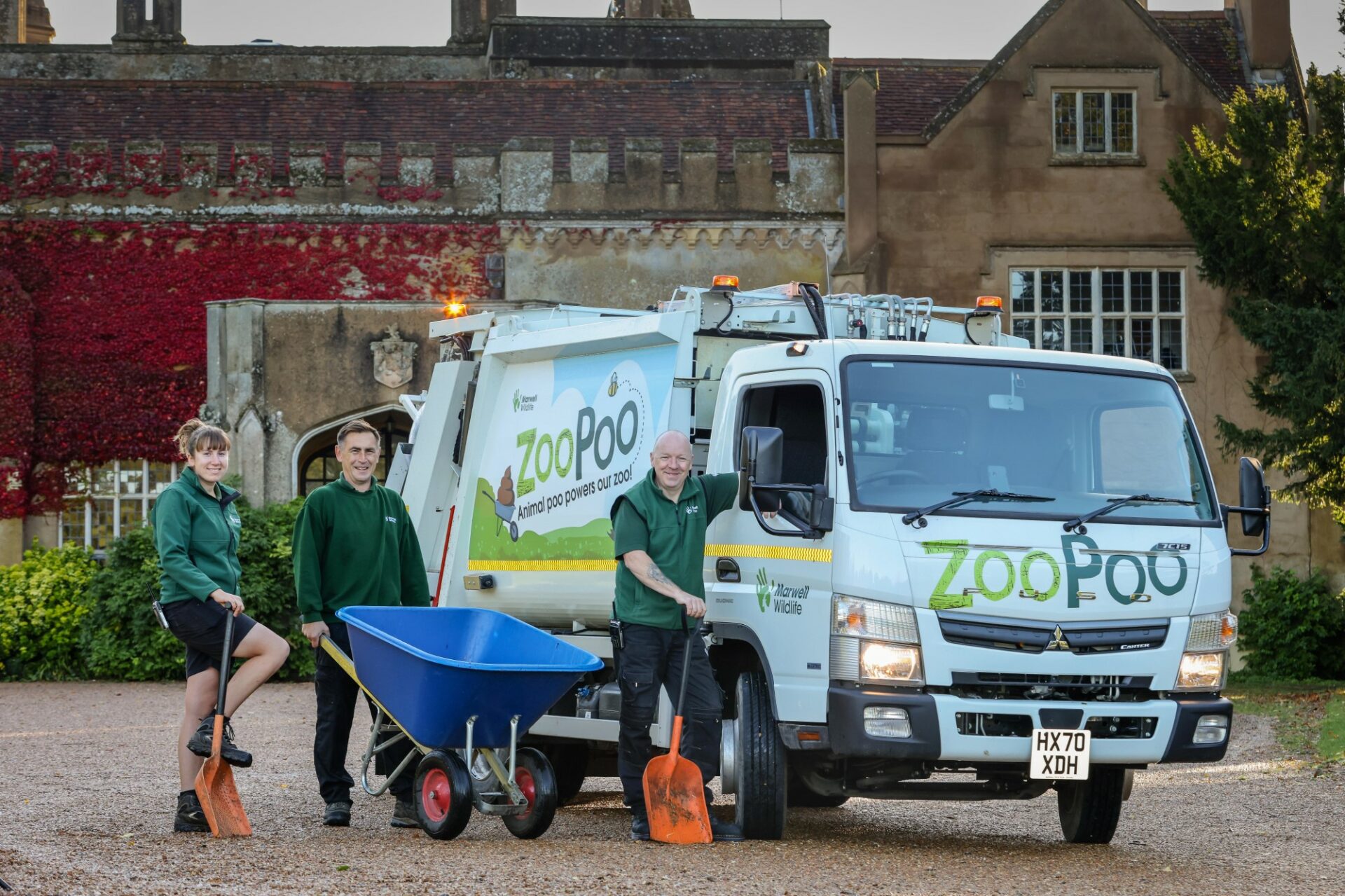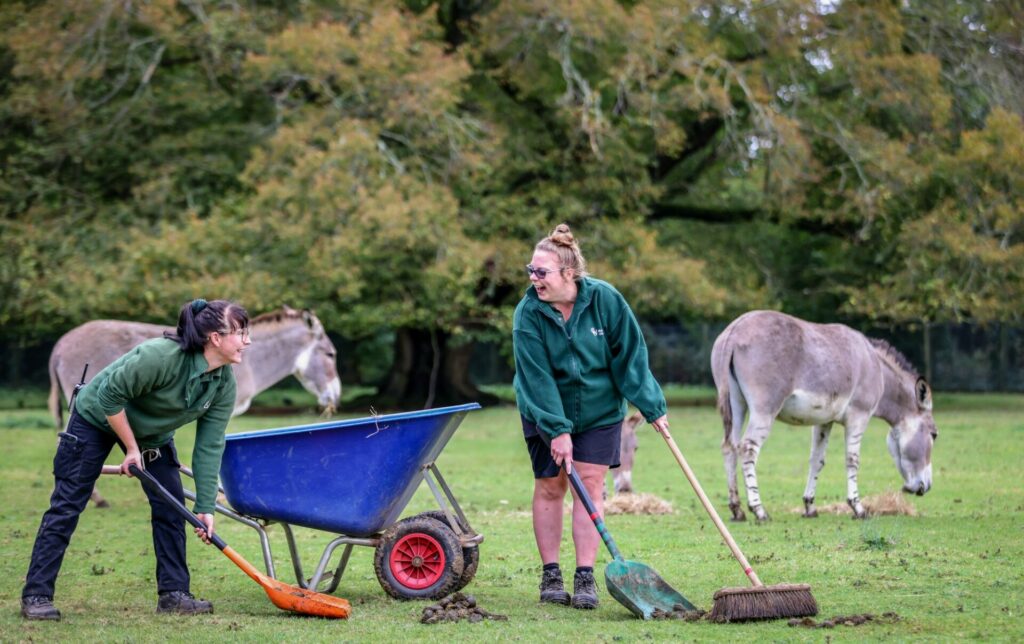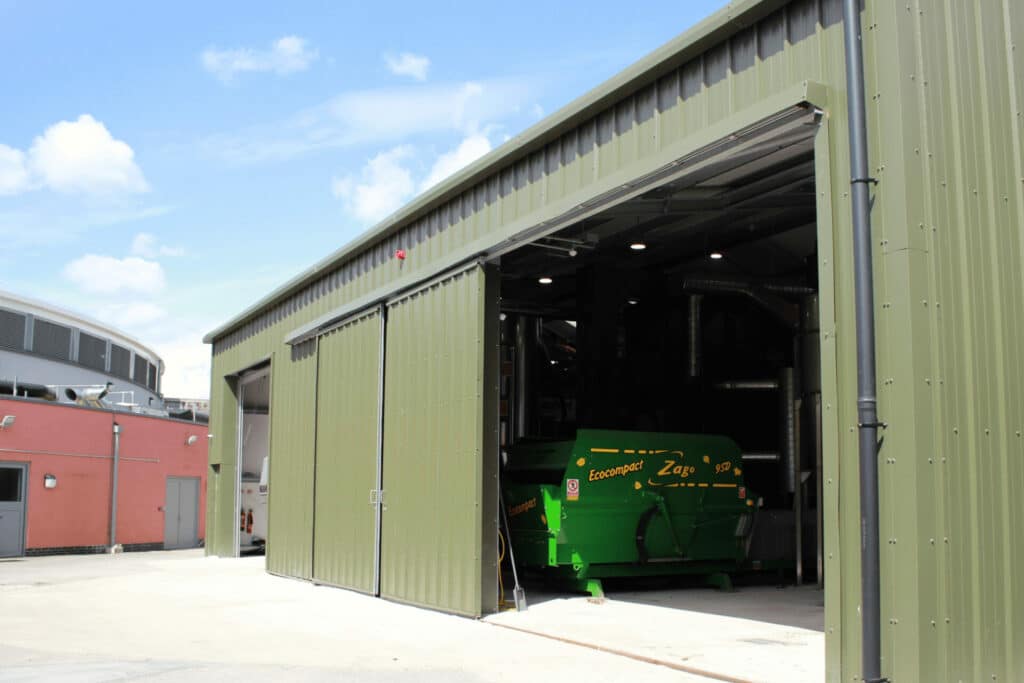Our world-first initiative harnesses the power of zoo poo!
October 28, 2021
October 28, 2021

Marwell Zoo has become the first of its kind to generate renewable energy using animal waste. Zoo poo from endangered species such as Grevy’s zebra, Scimitar-horned oryx, and African wild ass will heat our largest buildings using biomass technology.
The world-first Energy for Life initiative saves 220 tonnes of CO2 equivalent each year. It marks a critical step in our goal to become carbon-neutral next year.
Dr. Duncan East, Head of Sustainability said: “Using heat in this way from our own animals is unique in the UK and, as far as we know, across the world. There is an urgent need to reduce the burning of fossil fuels and leave these high carbon sources in the ground. We can’t act soon enough to replace the oil-fired heating systems in these buildings.
“Previously, 600 tonnes of animal waste was taken off-site to be composted. This came with a significant carbon transport cost. We came up with the idea of biomass heat generation to reduce our carbon footprint. We would turn a previous waste stream into a valuable resource – achieving cost savings in the process.”
Since the Energy for Life: Tropical House opened in 2018, we have been working with experts to build a solution using a blend of different technologies so our unique animal waste can be processed into briquettes to fuel the new biomass boiler efficiently.

Our dedicated team of keepers sweeps up the zoo poo from the animal paddocks and enclosures each morning. A mini refuse truck then collects the waste and transports it to the Energy Centre.
A digger transfers the mixture of manure and bedding to a shredder for mixing. It is then dried and pressed into briquettes, which are fed into the boiler.
The boiler produces hot water, which is fed into a 15,000-litre thermal store. It then flows underground to heat Energy for Life: Tropical House. The exhibit combines the tropical animal habitat with educational exhibits on energy flow, climate change, and powering modern lifestyles. Here, our resident animals including a Linne’s two-toed sloth, free-flying tropical birds, and crocodile monitor lizards as well as lush tropical plants benefit from the warm, humid environment.
Its roof is made from the latest ETFE (Ethylene tetrafluoroethylene) technology. It offers natural light, provides good insulation, and rainwater is harvested from the roof to water the plants within.

The next phase of the biomass system is to provide heat to other buildings across the zoo and will benefit the okapi, primates in Life Among the Trees, and Marwell staff who work in Grade 1 Listed Marwell Hall.
Dr. East said: “Replacing oil-fired heating systems with heat generated from waste from our own animals will hugely reduce our carbon footprint. What better way than to make use of a material which is in abundant and continuous supply.”
Since 2008, we have reduced our carbon output by 77% and champion renewable schemes in our local community. We also manage our own land both within the zoo and in the surrounding fields and woodland. This is to improve the biodiversity of native wildlife and produce hay and browse to feed our animals. Animal poo is burned for heat and the ash is added to our compost process and returned to the land.